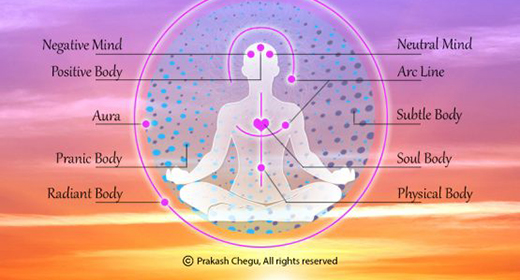Peter Diamandis: How long until rising sea levels and methane emissions are remembered as quaint troubles from decades ago?
 How many years until drones can plant billions of trees over the course of months, or until Carbon Capture and Storage (CCS) technologies can effectively and affordably sequester CO2 from power plants and industrial processes, while safely storing it?
How many years until drones can plant billions of trees over the course of months, or until Carbon Capture and Storage (CCS) technologies can effectively and affordably sequester CO2 from power plants and industrial processes, while safely storing it?
When will renewables—solar, wind, geothermal, nuclear—be so cheap and ubiquitous that coal, oil, and natural gas go into the history books alongside whale-oil, as ancient energy sources?
What technologies will catalyze this necessary future, and what market forces will enable them? In today’s blog, we’ll zoom into 10 emerging breakthroughs in 10 different industries, which will catalyze a new era of carbon neutrality.
This Metatrend is being driven by the convergence of the material sciences, AI, next-generation batteries, increasingly cheap use of renewables, Building Information Modeling (BIM) technologies, EVs, sensors, and advanced broadband networks.
Let’s dive in!
THE GREEN FUTURE – COMING SOON
Carbon is the building block of all life on Earth.
From proteins to DNA, from neurons to muscle tissue, pretty much everything in your body depends on carbon and carbon dioxide.
Yet it’s also the primary greenhouse gas responsible for what the World Economic Forum has dubbed one of the top five dangers to our future: extreme weather—with effects as diverse as wildfires and a volatile housing market.
But what if nuclear fusion, next-generation solar, and advanced batteries could not only slow down climate change, but reverse it?
This is the promise of several mind-blowing breakthrough technologies from 2022 – which we’ll discuss in the section below.
There is no question that climate change is anthropogenic in nature. The only question remaining is: are humans up to the task of reversing it?
As Elon Musk told me during our 2021 podcast when launching our $100M Carbon-removal XPRIZE, this is not an experiment we want to run for much longer.
The time for radical action is NOW.
At least in part, our ability to reverse climate change will be commensurate with our ability to imagineer a positive future, where breakthrough technologies unimaginable to our ancestors make our heat-trap problem seem quaint to our grandchildren’s children.
Current policies put us on pace for roughly 2.9 degrees Celsius of warming by 2100 — down from the 4-degree estimate before the 2015 Paris Agreement.
But our target needs to be the agreed-upon goal of 1.5 degrees Celsius. And, to do this, far more drastic measures will be needed.
Imagine a city where more energy is produced than consumed. A city whose power grid capitalizes on the abundant and free energy of the sun, which offers the Earth 8,000x more energy than we consume as a species. A city where renewables generate 100% of the energy used, and where battery storage is so efficient and cheap, all transportation has transitioned to electric.
When and where will that happen first? If the LA100 plan (designed in 2021) succeeds, the year will be 2035, and the city will be Los Angeles.
Approved unanimously by the council, the plan commits Los Angeles to 100% clean energy by 2035. And as councilman Mitch O’Farrell notes, “LA100 is not a utopian gesture. It is a work plan for a world in trouble.”
The warming of the planet by 2 degrees Celsius would greatly disrupt our planet, with frequent intense storms, higher ocean levels, extinction of wildlife and vegetation, declining coral reefs, melting ice and an increase in heat-related, flood-related, and smog-related deaths.
This is why the United States has committed to powering 80% of the country with renewable energy sources by 2050.
A carbon-neutral future is not only possible—it’s also necessary, and very much in the making.
10 ADVANCEMENTS THAT WILL MAKE YOU HOPEFUL FOR THE FUTURE OF THE EARTH
(1) BROADBAND NETWORKS
Greenhouse gas emissions from internet usage account for 3.7% of the global total—or the same as all emissions from global air traffic.
Yet the rise of Internet of Things (IoT) technologies is poised to revolutionize the way we consume energy.
Emerging breakthroughs such as fiber-optic networks and 5G are driving the sustainability of the IoT by enabling faster, more efficient data transfer and reducing energy consumption. Fiber-optic networks can transmit data over long distances with minimal loss, reducing the need for multiple energy-intensive data centers. 5G technology, on the other hand, offers lower latency, more reliable connections and improved energy efficiency compared to previous generations of wireless technology.
As these sustainable broadband technologies continue to advance, the IoT’s potential to reduce energy consumption and carbon emissions will only grow. Broadband networks are set to disrupt every sector of the modern world: from charging infrastructure to the democratization of electric cars.
(2) CARBON CAPTURE AND STORAGE (CCS)
CCS is a technology that captures CO2 emissions from large point sources such as power plants and industrial processes and stores the captured CO2 underground in geological formations, such as depleted oil and gas reservoirs.
According to the International Energy Agency (IEA), CCS could reduce CO2 emissions by as much as 90 gigatons by 2050—or equivalent to removing over 20 years’ worth of emissions from the entire world.
In addition to reducing emissions, CCS also enhances existing oil and gas assets through enhanced oil recovery (EOR), where CO2 is injected into depleted oil reservoirs to increase production. The U.S. Department of Energy estimates that EOR has the potential to recover over 60 billion barrels of oil, equivalent to over 4 years of total U.S. oil production.
The captured CO2 is stored underground in geological formations, with over 20 years of successful implementation and monitoring worldwide. The storage process has been proven to be safe and secure, and the already low risk of leakage or release into the atmosphere is decreasing.
(3) ENHANCED FARMING
Meat production takes roughly 20 times more land and produces about 20 times more greenhouse gas emissions than plant-based protein sources.
The rise of synthetically engineered affordable plant-based options is rapidly decreasing the demand for animal protein. With a CAGR of 20.5%, the industry is set to generate some $35 billion by the end of this decade.
Companies like Impossible Foods and Beyond Meat are the early winners of this trend, but true disruption is yet to be unlocked.
Meat production uses a quarter of the world’s land and 70% of global water use. It also produces 14.5% of greenhouse gases and is a major cause of deforestation and mass extinction.
Cultured meat, grown from animal stem cells in bioreactors, has the potential to overcome these problems and become more cost-effective than traditional meat. The process is automated, takes less time, and the range of meats and dairy products in development involve no animal suffering.
Just this week, Bill Gates backed Rumin8, an Australian startup aimed at reducing emissions from cow burps, with a $12-million-dollar investment towards feeding seaweed to cows to reduce their emissions.
This makes sense, since enteric methane emissions from cow burps alone account for approximately one-third of all agricultural greenhouse gas emissions.
CRISPR technology, additionally, has the potential to boost crop yield without over-application of fertilizers or over-extraction of irrigation water. In the decade ahead, CRISPR is poised to be a highly effective method for optimizing the carbon emissions of food production.
(4) THE RISE OF EVs
BloombergNEF reports that investments in electric vehicle charging are projected to exceed $100 billion in the near future, with the next $100 billion in spending estimated to happen in just three years, compared to a decade for the first $100 billion.
In 2022, roughly 16% of all new car sales in California were zero-emission vehicles—twice as much as in 2020. California automakers will be forced to electrify their vehicle fleet, as the state aims for 100% of new cars to be fully electric by 2035.
Electric vehicles are becoming increasingly affordable, and advances in materials sciences and AI have been rapidly improving battery efficiency and lifespan.
Tesla alone revolutionized batteries and energy storage by developing large-scale Powerpack systems for integrating renewable energy into the grid, affordable Powerwall home energy storage systems, advanced battery technology in their electric vehicles, and by reducing the cost of lithium-ion batteries through massive investment in battery production and research.
This has far-reaching consequences not just for the rise of electric vehicles, but for the whole ecosystem of carbon-reducing technologies.
The demise of the internal combustion car is bringing about the end of the era of fossil fuels. By now, every manufacturer has announced aggressive plans for electric vehicles. Ford Motor Company, for example, is investing $4.5 billion in electric cars, making more than 40% of its lines electrified.
(5) GREEN BUILDINGS
Buildings account for nearly 40% of all greenhouse gas emissions (through operational and embodied energy). The construction industry is one of the world’s fastest growing, but least digital—and therefore least efficient.
Generate, an MIT spin-off, suggests intertwining nature with digital technologies to solve this problem: using CO2-sequestering trees, and specifically mass timber (which lends itself exceptionally well to digital design) to build high-density, energy-efficient, and biophilic skyscrapers.
Mass timber not only acts as a carbon sink through CO2 storage, low pollution, and low waste, but it functions as a kit-of-parts, lego-like building system—meaning it gets to capitalize on the scalability of zeroes and ones. With Generate’s coined Insilico Design approach, architects will soon get to simulate fully pre-engineered timber buildings within minutes, optioneering between energy-efficient, HVAC-optimized designs, which link directly to real building products in the sustainable materials supply chain.
This approach—of simulating buildings fully in a virtual space—significantly decreases air and noise pollution, while reducing waste and carbon emissions related to transportation. It also helps restore the health of our forests, as part of a renewable material, closed-loop economy.
Sustainable manufacturing will be a big part of a carbon-negative future.
General Motors, for example, recently reported they’ve saved $1 billion over the past few years with their 152 zero-waste facilities. This kind of closed-loop manufacturing will become increasingly pervasive, and sustainable building materials, like mass timber, will be progressively democratized.
(6) NUCLEAR
According to the International Atomic Energy Agency (IAEA), nuclear power plants currently avoid the emission of 2 billion tons of CO2 per year, which is equivalent to taking 430 million cars off the road.
Nuclear energy is a baseload power source that can provide consistent, 24/7 electricity, helping to ensure a stable and reliable energy supply. Data show that countries with significant nuclear energy generation have some of the lowest CO2 emissions per capita, while maintaining strong economic growth.
This makes a compelling case for the continued development and deployment of safe nuclear energy as part of a comprehensive strategy to combat climate change.
But last December, scientists at the Lawrence Livermore National Laboratory in California shocked the world with a momentous breakthrough in the quest towards nuclear fusion, producing a net energy gain—1.5 megajoules—in a fusion reactor for the first time in history.
Nuclear fusion has long been seen as the holy grail of energy production, since it produces more energy than nuclear fission, smaller amounts of short-lived radioactive waste, no greenhouse gas emissions, and nearly limitless clean energy.
Harnessing the process that powers all known stars in the universe is a game-changer in energy production. This reaction merges two light nuclei to form a heavier nucleus, releasing energy in the process as the mass of the resulting nucleus is less than the original two. Ultimately, this transforms the leftover mass into a source of abundant—and in principle, free—energy.
Hurdles will need to be solved before fusion can be used in power stations. But the theoretical viability of nuclear fusion is proof that the power of the stars can be employed on Earth.
Now it’s up to entrepreneurs to make all of this happen—and already, there are 37 privately funded fusion companies working on commercializing various forms of fusion. One example is Commonwealth Fusion Systems, spun out of MIT in 2017, which is building a tokamak the size of a tennis court, backed with $2 billion in private capital.
(7) RENEWABLES
Between 2010 and 2020, the use of renewable energy sources like wind, solar, and hydropower more than doubled.
Wind and solar in particular have been dropping in price and rising in performance on an incredibly consistent basis. And a convenient fact about wind and sun is that typically, wherever you are, it’s either windy or sunny—or, sometimes, both.
Materials science is now merging with solar, changing the way we build panels and the way those panels perform. Take “quantum dots,” essentially nanoscale chunks of semiconductor material that are starting to show up in solar cells. The big deal is energy conversion. Quantum dots triple the state-of-the-art energy output, turning a solo photon into a trilogy of electrons, raising that conversion rate to 66%.
But the most important point is also the most obvious one: Sunlight is free. And abundant.
This helps explain why Peabody Coal, the largest private coal company in the world, filed for bankruptcy. In the first decade of this century, coal stocks dropped 75 to 90%.
Over the past forty years, there has been a three-hundredfold reduction in the cost of making a solar panel. It now costs less to build a new wind farm or solar plant than it does to operate an existing coal plant.
Another driver of the rise of renewables is improved battery technology. As BloombergNEF reports, the energy storage market has been doubling for the past few years, despite high energy storage costs, adding roughly 28GW/69GWh of energy storage by the end of 2023.
Battery technology is advancing quickly, with prices dropping 2x faster than even the most optimistic forecasters projected. This will ultimately translate into storage capacity for an all-electric, all-renewable economy.
(8) HYDROGEN
According to the International Energy Agency (IAEA), the widespread use of hydrogen could reduce global CO2 emissions by up to 6 gigatons per year by 2050.
Hydrogen fuel cell vehicles emit up to 90% less emissions compared to traditional gasoline vehicles. Additionally, hydrogen has the potential to replace natural gas as a peaker plant fuel, which could result in a reduction of over 300 million tons of CO2 emissions per year.
Just last week, startup ZeroAvia made headlines with their recent test flight of a 19-seat Dornier 228, the largest plane powered partially by hydrogen fuel cells.
The benefits of hydrogen-fueled planes include lower greenhouse gas emissions, increased energy efficiency, improved range, reduced dependence on fossil fuels, and quieter operations.
On top of it, hydrogen is incredibly light, leading aviation giants like Airbus to double-down on investments in hybrid-hydrogen aircrafts. ZeroAvia plans to reach commercial flight with larger, hydrogen-powered planes by the end of this decade.
Deforestation, which is a major contributor to species extinction, causes the loss of 18.7 million acres of forest each year, and 15% of greenhouse gas emissions.
BioCarbon Engineering is a British company using AI-guided tree-planting drones to combat deforestation by planting 100,000 trees a day per pilot, with the ambitious goal of building a global army of 10,000 drones to replant a staggering one billion trees a year.
This technology will converge synergistically with the rise of mass timber buildings, allowing for a closed-loop, renewable material economy.
At the 2020 World Economic Forum (Davos), the One Trillion Tree initiative platform was jointly announced to provide support to the UN Decade on Ecosystem Restoration (2020–2030), led by UNEP and FAO.
By some estimates, a trillion trees could sequester some 200 gigatons of carbon over their lifetimes—equal to the annual emissions from more than 43 billion cars.
(10) THE POWER OF AI & QUANTUM TECHNOLOGIES
Perhaps the biggest impact on climate will come from AI and Quantum Technologies over the decade ahead… predicting, modeling, analyzing, and optimizing.
Modeling Usage: AI can predict energy consumption patterns with unparalleled accuracy of 90%, allowing building managers to reduce energy waste and increase efficiency. DeepMind’s machine learning system, for example, was able to “consistently achieve a 40-percent reduction in the amount of energy used for cooling.”
Predicting Crop Yield: In agriculture, a study conducted by the University of California Davis showed that AI algorithms were able to predict crop yields with over 85% accuracy, and reduce water use by 20%. Another study, by the University of Cambridge, showed AI could accurately identify plant diseases and pests in real-time, reducing the use of pesticides.
Optimized Performance: In transportation, AI-powered predictive maintenance systems are being used to optimize vehicle performance and reduce fuel consumption. In renewable energy, AI is optimizing energy generation based on weather patterns and usage and predicting equipment failures before they occur.
New Materials: A study by the University of Cambridge found that the use of quantum materials in the manufacturing of solar panels and wind turbines can increase their lifespan by 20-30%.
Optimization/Algorithms: A research team at MIT found that quantum computing can simulate and optimize energy grids, leading to a 15-20% increase in efficiency. Companies such as 1QBit and Zapata Computing are working on developing quantum algorithms for energy optimization and carbon capture storage. 1QBit has partnered with oil and gas companies to optimize their energy production and reduce emissions, while Zapata Computing is working on quantum-powered simulations for carbon capture processes.
The synergistic use of AI and quantum technologies to solve our sustainability crisis will offer a new set of very powerful and massively scalable tools to researchers and technologists to address climate change.
This future is arriving fast, and the capital to fuel the revolution is accelerating alongside the tech.
WHERE’S THE MONEY COMING FROM?
Increasingly, the public is demanding radical action on the warming of our planet, and the risk of reputational damage for companies that fail to address sustainability is larger than ever.
In 2022 alone, venture capital poured $70 billion dollars into climate tech—or nearly double 2021’s record total.
As BloombergNEF reports, the American government is leading the charge, with more funding going into climate tech than ever before. The US Inflation Reduction Act (IRA), signed into law by President Biden in 2022, allocated $369 billion to the country’s clean energy economy.
This is the largest effort to strengthen the US commitment to climate solutions to date, with credits provided under the Advanced Manufacturing Production Credit and Clean Vehicle Credit sections to support the domestic supply chain from raw materials to battery cells, modules, EVs, and energy storage.
The IRA has already resulted in over $80 billion in new investments for the battery supply chain alone.
On top of that, philanthropy towards climate change mitigation nearly tripled between 2015 and 2021.
Most significantly, the XPRIZE Foundation (where I serve as Executive Chairman) recently announced our $100 million Carbon Removal XPRIZE (funded by Elon Musk) which challenges innovators to develop scalable technologies able to remove carbon at the gigaton level from the planet directly from the atmosphere or oceans and sequester it durably and sustainably.
This competition spurred the largest level of interest in any XPRIZE in the past 28 years.
Over 1,200 teams indicated their interest to compete, from more than 30 nations.
Historically, XPRIZE competitions have driven 20x the amount of the prize purse in total team investment, and ultimately created new companies worth 200x the prize purse over the course of the next decade. If the math holds up, this XPRIZE could help launch $20 billion in new companies reinventing our Earth’s ecological future. Big global problems mean big entrepreneurial opportunities.
FINAL THOUGHTS
Solving the global climate and environmental challenges will birth a multi-trillion dollar industry. Two important quotes from 2021 come to mind:
“Climate change brings economic opportunity that’s bigger than the internet boom.” – John Doerr (11/10/21)
“Carbon Capture tech will create the next Microsoft, Google, Amazon, and the next 8 to 10 Teslas…” – Bill Gates (10/20/21)
The convergence of breakthroughs in the material sciences, AI, alongside advancements in broadband networks, manufacturing, and energy storage, are driving a revolution in how we capture and reverse greenhouse gas emissions.
Growing environmental awareness is inciting an increasing amount of capital to flow into climate tech, and a wide range of novel technologies, coupled with policy changes and economic incentives, are moving humanity towards gigaton carbon capture.
All industries, from computing to food production, will feel increasing pressure to develop low-carbon-footprint alternatives to their current infrastructure—and all industries will capitalize on the exponential gains of cheap and ubiquitous AI.
To combat climate change, we’ll need to make renewable energy so cheap, such a “no-brainer” that fossil fuels disappear for the same reason the Stone Age vanished: Not for a lack of stones, but for a 10x better option.
Given our access to exponential technologies, I am hopeful we can fix the problem — we just need to focus our intellect, resources and technology, and focus it fast.
The abundance of energy from the sun alone puts us on track to meet between 50- and 100% of the world’s energy production from solar in the next 20 years.
As I have often said, the world’s biggest problems are the world’s biggest business opportunities.
How will YOU help catalyze a carbon-neutral future?
What actions can YOU take to develop or fund the breakthrough technologies that will enable the radical change needed for this vital future?
If you’re interested in the rise of a carbon-neutral, renewable, and close-loop economy, join me at my A360 Summit next month to learn how you & your business can contribute to it.
(This blog is written by Peter H. Diamandis, MD and Raiany Romanni)









































